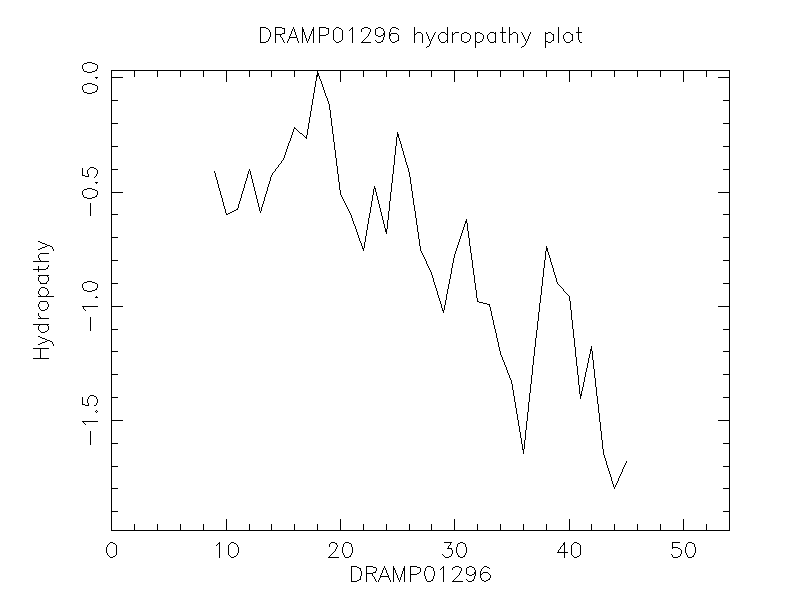General Information
-
DRAMP ID
- DRAMP01296
-
Peptide Name
- Omega-conotoxin-like protein 1 (OCLP1)
-
Source
- Apis mellifera (Honeybee)
-
Family
- Not found
-
Gene
- Not found
-
Sequence
- ASKCGRHGDSCVSSSDCCPGTWCHTYANRCQVRITEEELMKQREKILGRKGKDY
-
Sequence Length
- 54
-
UniProt Entry
- H9KQJ7
-
Protein Existence
- Transcript level
Activity Information
-
Biological Activity
- Antimicrobial, Antibacterial
-
Target Organism
- No MICs found in DRAMP database
-
Hemolytic Activity
-
- No hemolysis information or data found in the reference(s) presented in this entry
-
Cytotoxicity
-
- Not included yet
-
Binding Target
- Not found
Structure Information
-
Linear/Cyclic
- Not included yet
-
N-terminal Modification
- Not included yet
-
C-terminal Modification
- Not included yet
-
Nonterminal Modifications and Unusual Amino Acids
- Not included yet
-
Stereochemistry
- Not included yet
-
Structure
- Not found
-
Structure Description
- Not found
-
Helical Wheel Diagram
-
PDB ID
- None
-
Predicted Structure
- There is no predicted structure for DRAMP01296.
Physicochemical Information
-
Formula
- C252H408N82O82S7
Absent Amino Acids
- F
Common Amino Acids
- CGKRS
Mass
- 6122.93
PI
- 8.63
Basic Residues
- 12
Acidic Residues
- 7
Hydrophobic Residues
- 9
Net Charge
- +5
-
Boman Index
- -15934
Hydrophobicity
- -0.946
Aliphatic Index
- 43.33
Half Life
-
- Mammalian:4.4 hour
- Yeast:>20 hour
- E.coli:>10 hour
Extinction Coefficient Cystines
- 8855
Absorbance 280nm
- 167.08
Polar Residues
- 22
DRAMP01296

Comments Information
Function
- The impact of this protein on the neuronal activity of the honeybee brain is not known. It does not affect apparent movement or hatching of blowfly larvae. However, when injected into fish, it induces a strong reversible paralytic effect. In addition, the presence of this small peptide in the hemolymph of adult drones together with its induction after bacterial infection suggests that this peptide exhibits antibacterial activity. This peptide may act by inhibiting ion channelS.
Literature Information
- ·Literature 1
-
Title
- Novel families of toxin-like peptides in insects and mammals: acomputational approach.
-
Pubmed ID
- 17433819
-
Reference
- J. Mol. Biol. 369:553-566 (2007).
-
Author
- Kaplan N., Morpurgo N., Linial M.
- ·Literature 2
-
Title
- Honey bee drones maintain humoral immune competence throughout alllife stages in the absence of vitellogenin production.
-
Pubmed ID
- 22442369
-
Reference
- J. Exp. Biol. 215:1313-1322 (2012).
-
Author
- Gatschenberger H., Gimple O., Tautz J., Beier H.

